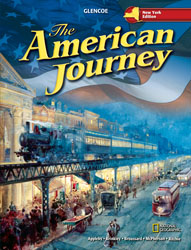

The American Journey © 2009 New York EditionChapter 8: The Federalist EraChapter OverviewsSection 1: The First President After taking the oath of office, President Washington and the new Congress had to make many decisions about the structure of the new government. They created departments within the executive branch, a court system, and added the Bill of Rights to the Constitution. The Bill of Rights protected individual liberties, such as freedom of speech and the right to a trial by jury. While Washington focused his attention on foreign affairs, Alexander Hamilton, the secretary of the treasury, was left to tackle the nation’s large financial debt. He proposed that the Confederation government repay debts owed to individual American citizens and countries. As a compromise to Southerners who thought this favored the North, Hamilton supported a plan to locate the nation’s capital in the South. Hamilton also asked Congress to create a national bank, and proposed a tariff on imported products to encourage the growth of American industry. Section 2: Early Challenges The new government faced many challenges. In Pennsylvania, farmers angry about a tax on whiskey staged the Whiskey Rebellion. Washington decided to exert his power and used force to crush this revolt. In the West, settlers were moving onto land protected by treaties with Native Americans. After many battles, however, Native Americans signed the Treaty of Greenville and surrendered most of their land. When Britain and France went to war in 1793, Washington hoped that the United States could remain neutral. When the British captured and impressed American ships, Washington sent chief justice John Jay to reach a settlement. In what became known as Jay’s Treaty, the British agreed to withdraw from American soil. Another agreement, known as Pinckney’s Treaty, also settled U.S. disputes with Spain. Section 3: The First Political Parties By 1796 Americans began to take opposing sides on issues, and two political parties emerged from the debates. The Federalists generally supported a strong central government, one that had the powers not only explicitly stated in the Constitution, but also those implied by it. The Republicans, on the other hand, wanted to limit government’s power in order to protect individual liberties. They believed that a democracy required the participation of ordinary people and not just elected representatives. In the election of 1796, Federalist John Adams had the most votes and became president. Republican Thomas Jefferson received the second highest number of votes and so became Vice President. During his administration, Adams was faced with resolving ongoing disputes with France, as well as the challenge sparked by the Alien and Sedition Acts over the principles of states’ rights and individual liberties. |  |















